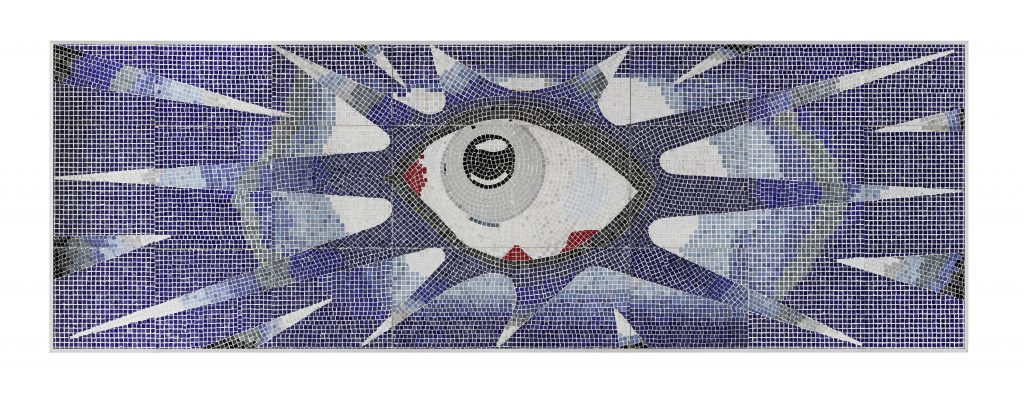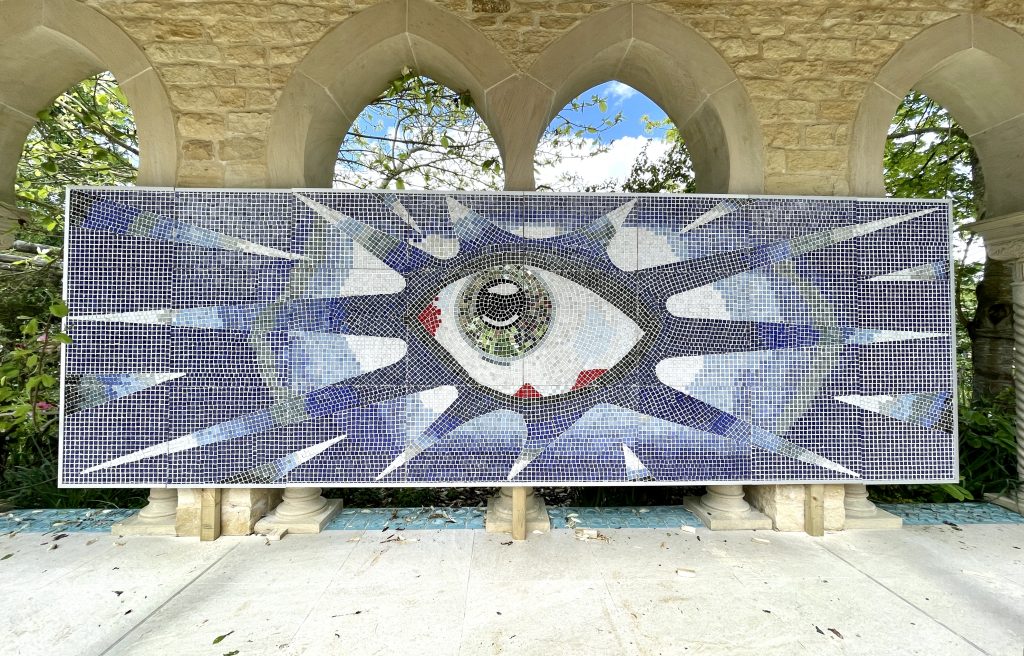Auctions
A Psychedelic Mosaic From John Lennon’s Swimming Pool Surfaces at Auction
The work is estimated to fetch up to six figures.

The work is estimated to fetch up to six figures.

Artnet News

In 1964, at the height of Beatlemania, John Lennon and his then-wife Cynthia purchased a mansion in the verdant enclave of St George’s Hill in Kenwood, Surrey in the U.K. It was a vast property, at which the couple installed a globe-shaped bar and hung artworks acquired from the students of the Liverpool College of Art. For its outdoor pool, Lennon commissioned a massive mosaic featuring a glinting eye that would gaze up from the wall of the deep-end.
The dazzling 17,000-tile panel, measuring about five by 15 feet, would outlast the Lennons’s stay at Kenwood. Now, almost six decades on from its installation, the piece will hit the block at Bonhams on November 29, tagged with an estimate the auction house characterized as “a six-figure sum.”
Likely designed by Lennon himself (who had masterminded a separate pool mosaic for his bandmate George Harrison), the 1965 commission was created by Joseph Ritrovato, the master tiler who also single-handedly installed it.
The mosaic comprises red, blue, green, and white polychrome tiles, as well as mirrored tiles for the iris, creating a psychedelic effect. When he wasn’t spending contemplative hours by the pool, Lennon could reportedly view the work from his favorite sunroom in the house.

The “Psychedelic Eye” mosaic commissioned by John Lennon for his swimming pool at his Kenwood home. Photo: Claire Carroll Photography, courtesy of Bonhams.
John and Cynthia sold their Kenwood home in 1968 after their divorce, but the mosaic would remain in the pool until 1984, when it was removed for preservation by the property’s then-owners. The following year, the panel went on public view at the International Garden Festival at the Royal Festival Gardens in Liverpool (alongside, fittingly, an inflated yellow submarine). It remained on site at the gardens until 2002, before its current owners acquired it in 2011.
Over the past two decades, the mosaic has also been showcased in museums from the Museum of Liverpool Life in 2002, to the Beatles Story in 2008. Most prominently, it was included in “You Say You Want a Revolution?” a major 2016 show at London’s Victoria & Albert Museum, which explored historic countercultural movements. The work was on view at the show’s entrance, with the panel’s eye greeting visitors as they entered.
The mosaic’s stylings obviously echo the psychedelic sixties, but Bonhams’s Claire Tole-Moir also emphasized what it reveals about the Lennon’s tastes (who, for what it’s worth, also famously recruited art collective The Fool to paint his white piano at Kenwood with trippy panels).
“This monumental mosaic,” she said in a statement, “is a striking example of the Beatle’s artistic vision and influences. With Kenwood still under private ownership, it is very rare to see anything from when John Lennon lived there, making the ‘Psychedelic Eye’ mosaic an incredibly important artifact of Beatles history.”
More Trending Stories:
Conservators Find a ‘Monstrous Figure’ Hidden in an 18th-Century Joshua Reynolds Painting
A First-Class Dinner Menu Salvaged From the Titanic Makes Waves at Auction
The Louvre Seeks Donations to Stop an American Museum From Acquiring a French Masterpiece
Meet the Woman Behind ‘Weird Medieval Guys,’ the Internet Hit Mining Odd Art From the Middle Ages
A Golden Rothko Shines at Christie’s as Passion for Abstract Expressionism Endures
Agnes Martin Is the Quiet Star of the New York Sales. Here’s Why $18.7 Million Is Still a Bargain
Mega Collector Joseph Lau Shoots Down Rumors That His Wife Lost Him Billions in Bad Investments